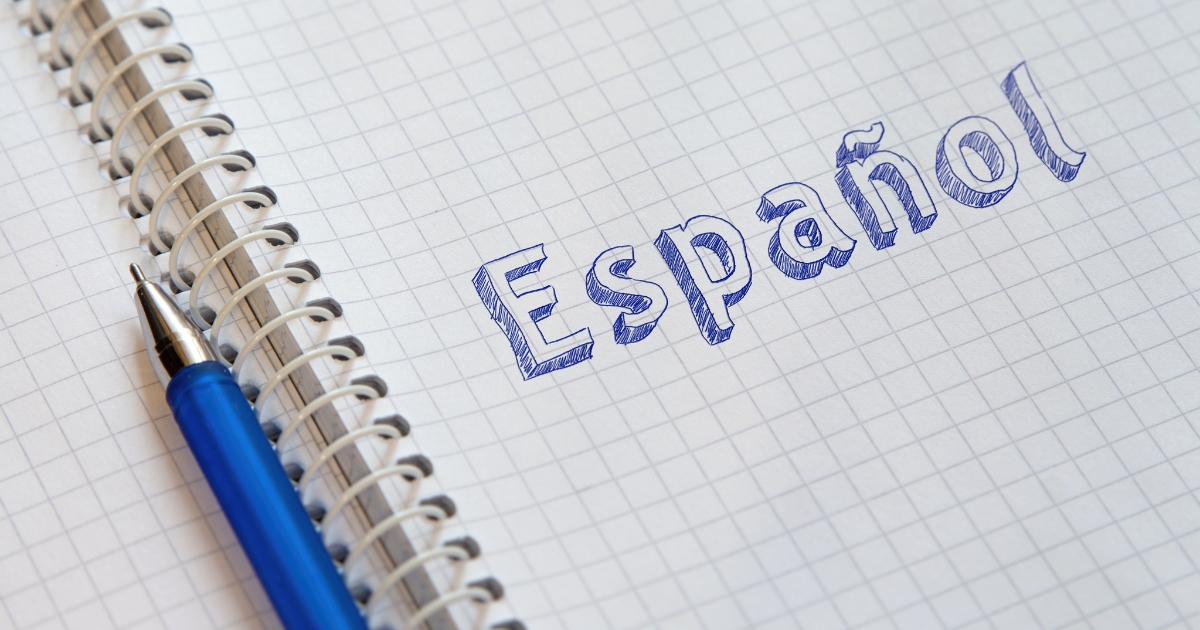Teaching Spanish at home can be an incredibly rewarding experience for both you and your child. However, with so many curriculum options available, finding the right Spanish homeschool curriculum can feel overwhelming.
This guide will help you break down the process into manageable steps, so you can confidently choose a curriculum that fits your child’s needs, your teaching style, and your goals.
Define Your Goals and Assess Resources
Before jumping into curriculum options, it’s important to identify your goals and evaluate the resources available to you. Taking the time to understand these factors will lay a solid foundation for effective decision-making.
Questions To Ask Yourself
- What does success look like? Determine whether you want your child to gain basic conversational skills, achieve fluency, or focus on reading and writing in Spanish.
- How comfortable are you with teaching Spanish? If you’re fluent, you may want a program that offers parent-led guidance. If not, a self-guided or teacher-supported program might work better.
- What’s my budget? While some programs may require a financial investment, there are free or low-cost alternatives available online.
- What’s my child’s learning style? Is your child a visual learner who thrives with videos and diagrams? Do they respond well to music or prefer hands-on activities? Knowing this will help you select a curriculum your child will engage with.
Evaluate Available Resources
- Digital vs. Physical Products: Decide if you want to use online programs and apps or stick to textbooks and workbooks.
- Time Commitment: Be realistic about how much time you can devote to teaching Spanish. Some programs require daily involvement, while others are more flexible.
- Family Preferences: Consider whether your family values a more traditional, academic approach or a dynamic, interactive learning experience.
Review Types of Spanish Homeschool Curricula
Once you have clarity on your goals and resources, explore the different types of Spanish homeschool curricula. No single solution is perfect for everyone, so it’s helpful to weigh the pros and cons of each type.
Comprehensive Digital Programs
Programs like Rosetta Stone or Duolingo are popular for their all-in-one features. These platforms emphasize immersive, interactive lessons that focus on listening, speaking, reading, and writing skills.
- Pros:
- Structured design with clear progression
- Interactive features like quizzes and speech recognition
- Suitable for self-paced learning
- Cons:
- Requires consistent internet access
- Limited opportunities for deeper cultural learning
Traditional Textbook-Based Programs
Textbook-based programs like Avancemos or ¡Así Se Dice! offer a more formal, academic approach. These typically include textbooks, workbooks, and teacher editions for guidance.
- Pros:
- Comprehensive resources for structured learning
- Ideal for parents who prefer clear lesson plans
- Often includes assessments to track progress
- Cons:
- Can feel less engaging for younger or kinesthetic learners
- May require significant parent involvement
Blended or Flexible Options
Some families prefer combining multiple resources to create a customized curriculum. For example, pairing bilingual books with language apps, videos, and even music.
- Pros:
- Tailored to your child’s interests and preferred learning style
- Great for families with diverse or limited resources
- Can include free tools like YouTube channels and podcasts
- Cons:
- Requires more planning and coordination by parents
- May lack structured milestones
Online Classes and Native Speakers
Programs like Homeschool Spanish Academy provide live, one-on-one lessons with native-speaking instructors.
- Pros:
- Personalized instruction tailored to your child’s level
- Strong focus on conversational skills
- Builds confidence through real-time interaction
- Cons:
- Higher cost compared to self-guided programs
- Scheduling may be less flexible
Evaluate Popular Options for Your Homeschool
Here are some noteworthy Spanish homeschool curricula and resources that many families find effective. Use this list as a starting point to compare options and decide what might work best.
1. Rosetta Stone Homeschool Edition
- Focus on speaking and pronunciation through speech recognition
- Tracks student progress for accountability
- Great for auditory learners
2. Duolingo for Schools
- Gamified lessons for a fun and engaging experience
- Adaptive to your child’s skill level
- Free to use, making it a budget-friendly option
3. Homeschool Spanish Academy
- Live, online lessons with native instructors
- Offers personalized teaching and direct feedback
- Encourages conversational fluency
4. Living Language Spanish
- Includes books, audio CDs, and online practice tools
- Covers speaking, reading, writing, and listening
- Comprehensive option for well-rounded learning
5. Bilingual Books and Audio
- Promotes reading and listening comprehension
- Flexible for independent study or interactive activities
- Combines well with other curriculum resources

Incorporate Spanish Into Everyday Life
Selecting the right Spanish homeschool curriculum is a critical step, but daily practice brings the subject to life. Immersing your child in Spanish beyond formal lessons will help reinforce the language.
Ideas for Everyday Integration
- Label Objects: Place sticky notes with Spanish vocabulary on common household items.
- Use Music and Songs: Play Spanish music or sing along to songs.
- Watch Spanish Media: Choose Spanish-language cartoons or shows with subtitles for family viewing.
- Practice Conversations: Start with simple greetings or phrases and build complexity over time.
Make It Part of Other Subjects
Turning other parts of your homeschool day into opportunities for Spanish practice can solidify what your child is learning:
- Math: Solve math problems using Spanish words and numbers.
- Science: Label parts of the body, plants, or anything studied in Spanish.
- History: Learn about the histories of Spanish-speaking countries.
Engage With The Community
- Attend local festivals or cultural events to expose your child to the language in real-life settings.
- Find Spanish-speaking playgroups or language exchange partners online.
- Participate in pen pal programs to connect with native Spanish speakers.
Tips for Long-Term Success
To ensure steady progress, keep the following tips in mind as your child continues their Spanish studies:
- Prioritize Consistency: Short, daily practice sessions are more effective than larger, infrequent blocks of time.
- Track Progress: Use journals or charts to celebrate achievements and identify areas for improvement.
- Stay Flexible: Adapt the curriculum as needed. Your child’s learning style may change, and it’s okay to try new approaches.
- Encourage Curiosity: Use resources like cultural books, recipes, or virtual museum tours to spark interest.
Finding the Right Solution for Your Family
The right Spanish homeschool curriculum is one that aligns with your family’s goals, resources, and your child’s learning preferences. Whether you choose a structured program, take a blended approach, or explore informal teaching tools, flexibility and engagement are key. By thoughtfully selecting materials and creating a language-rich environment, you can help your child develop a lifelong appreciation for Spanish while achieving their goals.





